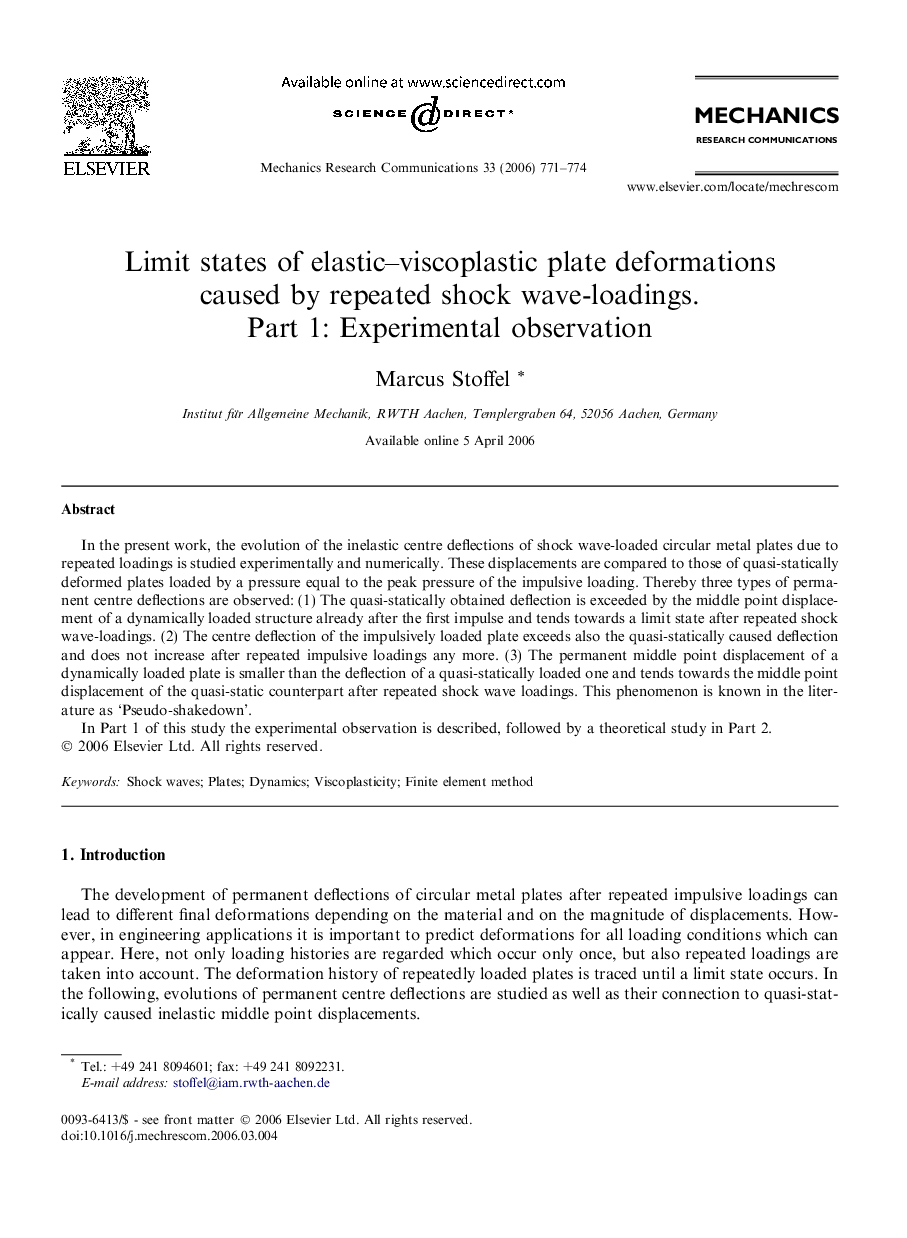| Article ID | Journal | Published Year | Pages | File Type |
|---|---|---|---|---|
| 803727 | Mechanics Research Communications | 2006 | 4 Pages |
In the present work, the evolution of the inelastic centre deflections of shock wave-loaded circular metal plates due to repeated loadings is studied experimentally and numerically. These displacements are compared to those of quasi-statically deformed plates loaded by a pressure equal to the peak pressure of the impulsive loading. Thereby three types of permanent centre deflections are observed: (1) The quasi-statically obtained deflection is exceeded by the middle point displacement of a dynamically loaded structure already after the first impulse and tends towards a limit state after repeated shock wave-loadings. (2) The centre deflection of the impulsively loaded plate exceeds also the quasi-statically caused deflection and does not increase after repeated impulsive loadings any more. (3) The permanent middle point displacement of a dynamically loaded plate is smaller than the deflection of a quasi-statically loaded one and tends towards the middle point displacement of the quasi-static counterpart after repeated shock wave loadings. This phenomenon is known in the literature as ‘Pseudo-shakedown’.In Part 1 of this study the experimental observation is described, followed by a theoretical study in Part 2.
